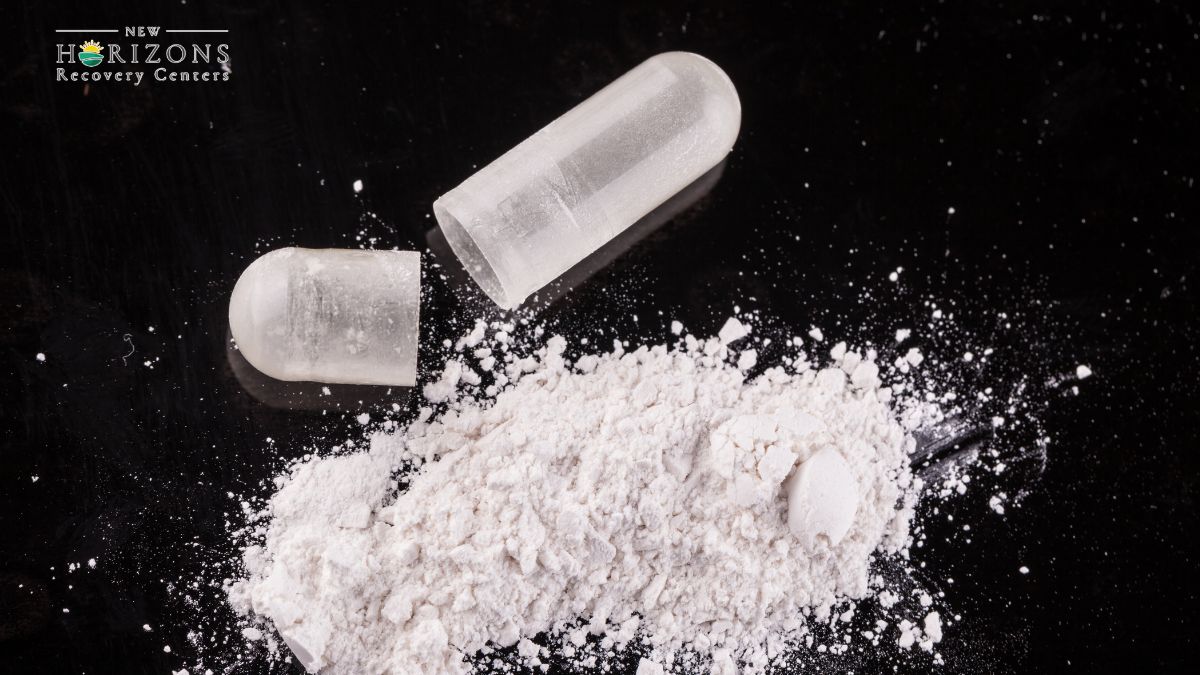Understanding Fentanyl and its Effects
Fentanyl, a highly potent synthetic opioid, has become a significant concern due to its potential for misuse and its impact on individuals who use it. Understanding the potency of fentanyl, its withdrawal symptoms, and its impact on the brain is crucial in addressing the challenges associated with this drug.

The Potency of Fentanyl
Fentanyl is an extremely potent opioid, with a potency that surpasses that of other opioids like heroin and morphine. According to the National Institute on Drug Abuse, fentanyl is approximately 50 to 100 times more potent than morphine. Its high potency makes it a desirable substance both for legitimate medical use and illicit purposes.
Withdrawal Symptoms of Fentanyl
Individuals who use fentanyl and then discontinue its use may experience severe withdrawal symptoms. These symptoms can include intense cravings, restlessness, muscle and bone pain, insomnia, diarrhea, vomiting, cold flashes, and leg movements. The severity of withdrawal symptoms can vary depending on several factors, including the duration and intensity of fentanyl use.
Impact of Fentanyl on the Brain
Fentanyl exerts its effects by binding to the opioid receptors in the brain, specifically in areas that regulate pain and emotions. This interaction leads to the development of addiction, where drug-seeking behaviors and drug use become progressively prioritized in an individual's life. Additionally, research has shown that fentanyl can induce rapid and dose-dependent decreases in oxygen levels in the nucleus accumbens (NAc) of the brain, followed by delayed and prolonged increases in glucose levels. These effects on brain chemistry contribute to the addictive nature and potential harm associated with fentanyl use.
Understanding the potency of fentanyl, its withdrawal symptoms, and its impact on the brain is essential for developing effective treatment strategies. The use of medications like suboxone, which combines buprenorphine and naloxone, has shown promise in helping individuals who use fentanyl safely and effectively overcome addiction. By addressing the unique challenges posed by fentanyl, healthcare providers can provide appropriate support and guidance to individuals seeking recovery.
The Role of Buprenorphine in Opioid Treatment
Buprenorphine plays a significant role in the treatment of opioid use disorder, including for individuals who use fentanyl. This section will introduce buprenorphine, discuss its safety and efficacy, and compare it to methadone, another commonly used medication for opioid addiction.
Introduction to Buprenorphine
Buprenorphine, the main ingredient in Suboxone, is a partial opioid agonist that can help reduce withdrawal symptoms and cravings while deterring the misuse of full opioids like fentanyl. Acting as a partial mu-opioid receptor agonist, it has a high affinity for the receptor but lower intrinsic activity compared to other full mu-opioid agonists like heroin or methadone. This results in a slow onset of action and a "ceiling effect," where dose-related side effects plateau at around 32mg, leading to a lower risk of overdose compared to other full agonist opioids [4].
Safety and Efficacy of Buprenorphine
Extensive research has demonstrated the safety and efficacy of buprenorphine in the treatment of opioid addiction, including for individuals who use fentanyl. In a large clinical trial conducted between 2020 and 2022, involving 1,200 people with moderate to severe opioid use disorder, only 1% of participants, including those who used fentanyl, experienced precipitated withdrawal after starting buprenorphine. The study concluded that high doses of buprenorphine were safe and effective for treating opioid withdrawal in the emergency department, providing symptom relief within a few hours and helping individuals transition more easily to outpatient drug treatment.
Furthermore, over 85% of individuals who initiated buprenorphine in the emergency department engaged in follow-up care, underscoring the importance of ongoing interactions with the healthcare system in guiding people with opioid use disorder towards treatment and recovery.
Buprenorphine vs. Methadone
Buprenorphine and methadone are both medications used in opioid substitution therapy, or opioid agonist treatment, to help individuals overcome opioid addiction. While both have shown effectiveness, there are some differences between the two.
One key distinction is the setting in which these medications are administered. Methadone is typically dispensed in specialized clinics, requiring daily visits and close monitoring, whereas buprenorphine can be prescribed by qualified healthcare providers in various settings, including primary care offices and specialized treatment centers.
Another difference lies in the pharmacological properties of these medications. Buprenorphine, as a partial agonist, has a lower risk of overdose compared to methadone, a full agonist opioid. Buprenorphine also has a ceiling effect, meaning that the opioid effects plateau at a certain dose, reducing the risk of respiratory depression and other side effects.
Ultimately, the choice between buprenorphine and methadone depends on various factors, including individual patient needs, preferences, and the availability of treatment options in a specific area. Consulting with a healthcare provider experienced in opioid addiction treatment can help determine the most suitable medication for each individual.
Understanding the role of buprenorphine in opioid treatment is crucial for addressing the specific needs of individuals who use fentanyl. This medication, along with counseling and behavioral therapies, can significantly improve outcomes in individuals with opioid use disorder, providing a path to recovery and a chance for a healthier, drug-free life.
Buprenorphine for People Who Use Fentanyl
For individuals who use fentanyl and are seeking treatment for opioid addiction, buprenorphine has shown to be beneficial in several ways. Buprenorphine is a medication that can help alleviate withdrawal symptoms and support long-term recovery. Let's explore the benefits of buprenorphine treatment, overcoming withdrawal with buprenorphine, and its role in opioid addiction recovery.
Benefits of Buprenorphine Treatment
Buprenorphine treatment offers several advantages for individuals who use fentanyl and are struggling with opioid addiction. Research conducted by an NIH-funded team involving 1,200 people with moderate to severe opioid use disorder demonstrated the safety and effectiveness of buprenorphine, including for individuals who use fentanyl [5].
One of the key benefits of buprenorphine treatment is its ability to relieve withdrawal symptoms rapidly. High doses of buprenorphine administered in the emergency department have been found to provide symptom relief within a few hours, making it easier for individuals to transition to outpatient drug treatment.
Overcoming Withdrawal with Buprenorphine
Withdrawal symptoms can be a significant barrier to seeking treatment for opioid addiction. However, buprenorphine has been proven effective in managing withdrawal symptoms, even for individuals using fentanyl. In the aforementioned clinical trial, only 1% of participants, including those who used fentanyl, experienced precipitated withdrawal after starting buprenorphine [5].
The ability of buprenorphine to alleviate withdrawal symptoms helps individuals transition into treatment smoothly and enhances their overall treatment experience. It provides relief from the discomfort associated with withdrawal, allowing individuals to focus on their recovery journey.
Buprenorphine and Opioid Addiction Recovery
Buprenorphine plays a vital role in opioid addiction recovery, including for individuals who use fentanyl. It can help reduce illicit opioid use and cravings, decreasing the risk of drug overdoses and death. Combining buprenorphine with counseling and other support services can further enhance the chances of successful recovery.
Engagement in follow-up care is crucial for individuals who initiate buprenorphine treatment. Research shows that over 85% of individuals who started buprenorphine in the emergency department continued to engage in follow-up care, emphasizing the importance of ongoing interactions with the healthcare system to guide individuals with opioid use disorder toward sustained recovery.
By utilizing buprenorphine as part of comprehensive treatment, individuals who use fentanyl can increase their chances of long-term recovery from opioid addiction. Buprenorphine helps manage withdrawal symptoms, reduces cravings, and provides a foundation for individuals to focus on rebuilding their lives free from the grip of addiction.
Understanding Suboxone
Suboxone is a medication that combines two active ingredients, buprenorphine and naloxone, and is commonly used in the treatment of opioid use disorder, including cases involving fentanyl. Let's explore what Suboxone is, how it combines buprenorphine and naloxone, and its effectiveness in opioid treatment.
What is Suboxone?
Suboxone is a prescription medication that combines buprenorphine and naloxone. Buprenorphine is a partial opioid agonist that helps reduce withdrawal symptoms and cravings while deterring the misuse of full opioids like fentanyl. Naloxone, on the other hand, is an opioid antagonist that blocks the effects of opioids and helps prevent misuse.
The combination of buprenorphine and naloxone in Suboxone provides a comprehensive approach to opioid treatment. Buprenorphine helps stabilize brain function and normalize body functions in individuals who use fentanyl, supporting the recovery process and reducing the likelihood of relapse. Naloxone acts as a safety measure, deterring misuse and reducing the risk of overdose.
Combining Buprenorphine and Naloxone
Suboxone contains a specific ratio of buprenorphine and naloxone. The buprenorphine component is the primary active ingredient, while naloxone acts as a safeguard against misuse. When Suboxone is taken as prescribed, the buprenorphine component binds to opioid receptors in the brain, reducing withdrawal symptoms and cravings. The presence of naloxone discourages the misuse of Suboxone by causing immediate withdrawal symptoms if it is injected intravenously.
The combination of buprenorphine and naloxone in Suboxone is a critical factor in the effectiveness of the medication in treating opioid use disorders, including those involving fentanyl. By providing relief from withdrawal symptoms and cravings while discouraging misuse, Suboxone supports individuals on their path to recovery.
Effectiveness of Suboxone in Opioid Treatment
Studies have shown that the use of buprenorphine products like Suboxone, in combination with counseling and behavioral therapies, can significantly improve outcomes in individuals with opioid use disorders, including those who use fentanyl [3]. Suboxone has been found to be effective in reducing illicit opioid use and cravings, as well as reducing the risk of overdoses and death in individuals who use fentanyl.
The effectiveness of Suboxone lies in its ability to address both the physical and psychological aspects of opioid addiction. It helps individuals manage withdrawal symptoms, reduce cravings, and stabilize their opioid receptors, allowing them to focus on their recovery journey. When used as part of a comprehensive treatment plan, Suboxone can be a valuable tool in the recovery process for individuals who use fentanyl.
In conclusion, Suboxone is a medication that combines buprenorphine and naloxone, offering a comprehensive approach to opioid treatment. By combining these two ingredients, Suboxone can help individuals manage withdrawal symptoms, reduce cravings, and support their recovery from opioid use disorders, including those involving fentanyl. When used as part of a comprehensive treatment plan, Suboxone has shown effectiveness in improving outcomes for individuals struggling with opioid addiction.
References
[1]: https://nida.nih.gov/publications/drugfacts/fentanyl
[2]: https://www.ncbi.nlm.nih.gov/pmc/articles/PMC5809788/
[3]: https://www.samhsa.gov/medications-substance-use-disorders/
[4]: https://go.drugbank.com/drugs/DB00921
[5]: https://www.nih.gov/news-events/nih-research-matters/





-ink.jpeg)
-ink.jpeg)
